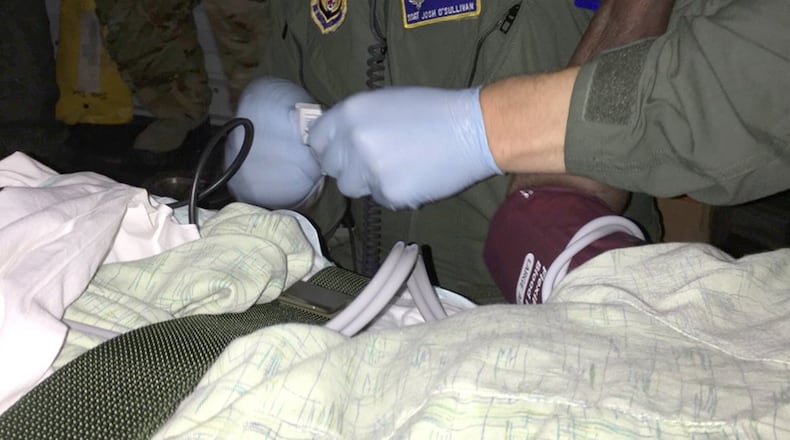When the call for support did come in, 2nd Lt. Kausharl Jayawardena, the 88th Medical Group’s Medical Readiness Flight commander, turned to his team to be certain that the tasker’s requirements would be met.
The 88th MRF, a flight of the 88th Medical Support Squadron led by Lt. Col Jeremy Hooper, takes care of training, equipping and posturing approximately 2,000 88th MDG members to report to a variety of contingencies wherever the need arises. With more than 150 medical teams to track and have at ready for deployment, including associated equipment packages, the flight has a robust mission.
“We were put on prepare-to-deploy status when Hurricane Harvey first came about,” Jayawardena said.
Initially, the flight was instructed to begin posturing an “EMEDS plus 25,” which is an Expeditionary Medical Support System made up of 97 medical personnel. Additional taskings for an En-Route Patient Staging System team flowed, which meant an additional 20 people that needed to be postured.
“It ultimately ended up being 130 folks,” Jayawardena said of their original tasking. “With the alternates, it came to 178.”
After combing through all of the affected Medical personnel’s training records and ensuring that their other requirements were up to date, Jayawardena said they were ready to go.
“Whatever training they had, whatever equipment they needed, we postured and had everything ready,” Jayawardena said.
The flight kept other supporting 88th Air Base Wing organizations, like the Installation Deployment office, informed of the taskings and the Wright-Patterson AFB deployment machine moved their pieces together to be able to respond when given the notification.
A call did come down at midnight one night for a Critical Care Air Transportation team comprised of three individuals. Jayawardena said that the team was formed and dispatched to pre-stage at Little Rock Air Force Base, Arkansas, within 12 hours with the support of the 88th Logistics Readiness Squadron, 88th Medical Logistics and the Installation Personnel Readiness offices.
It was later determined their services wouldn’t be needed after all, and the team returned home. Things were far from over for the MDG.
“When Irma happened, we were placed on the same status as before,” Jayawardena said of a second prepare-to-deploy order issued just a week later.
While the flight went through many of the same experiences as they faced when responding to the first order, they refined their processes. As a result, the next time a go notification for another CCAT team came down, they were out of the door within eight hours. The CCAT team went to Scott AFB, Illionois, and like the experience at Little Rock AFB, they were returned to Wright-Patt without being able to directly support the hurricane relief effort.
When Hurricane Maria churned through the Caribbean, devastating the islands in its path, including Puerto Rico, a third prepare-to-deploy order came down. Again, a team was dispatched, and this time within four hours.
Since then, the group continues to have its members providing support in three-member teams. Most recently they have been performing missions transporting patients from Puerto Rico, St. Croix and bringing people state-side to various locations.
About the Author
